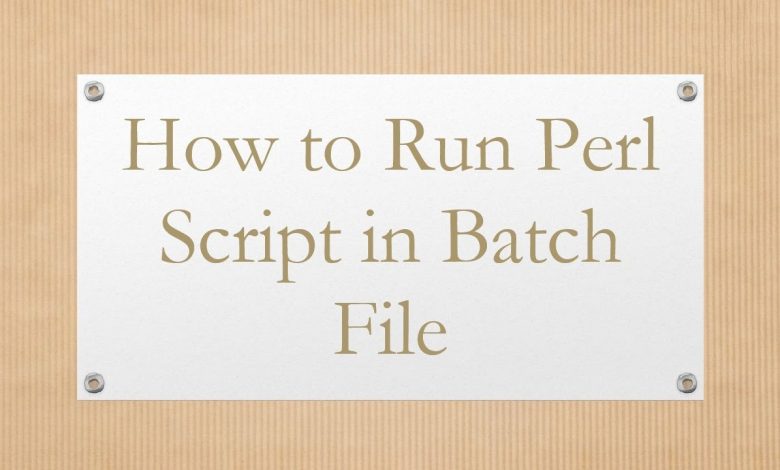How to Run Perl Script in Batch File

Disclaimer/Disclosure: Some of the content was synthetically produced using various Generative AI (artificial intelligence) tools; so, there may be inaccuracies or misleading information present in the video. Please consider this before relying on the content to make any decisions or take any actions etc. If you still have any concerns, please feel free to write them in a comment. Thank you.
—
Summary: Learn how to execute Perl scripts within a Windows batch file efficiently. Discover step-by-step instructions and best practices for integrating Perl scripts into your batch processing workflow.
—
Batch scripting on Windows provides a powerful way to automate tasks, and integrating Perl scripts into batch files can enhance their functionality. Here’s a step-by-step guide on how to run a Perl script within a batch file:
Create a Perl Script: First, ensure you have a Perl script (.pl file) ready for execution. You can use any text editor to write your Perl script, saving it with the “.pl” extension. For example, let’s assume you have a Perl script named “myscript.pl”.
Open Notepad or any Text Editor: Open Notepad or your preferred text editor.
Write Batch File Commands: In the text editor, write the batch file commands to execute the Perl script. Start by using the perl command followed by the path to your Perl script. For example:
[[See Video to Reveal this Text or Code Snippet]]Ensure to replace “C:pathtomyscript.pl” with the actual path to your Perl script.
Save the Batch File: Save the file with a “.bat” extension. For instance, you can name it “run_myscript.bat”.
Run the Batch File: Double-click the batch file to execute it. This will run the Perl script specified in the batch file.
By following these steps, you can seamlessly integrate Perl scripts into your batch processing workflow on Windows systems. This method allows for the automation of tasks that require the execution of Perl scripts, streamlining your workflow and improving efficiency.
Remember to ensure that Perl is installed on your system and that the path to the Perl executable is correctly specified in the batch file if it’s not included in the system’s PATH environment variable.
With this approach, you can harness the power of Perl scripting alongside batch processing to handle various tasks efficiently within a Windows environment.
